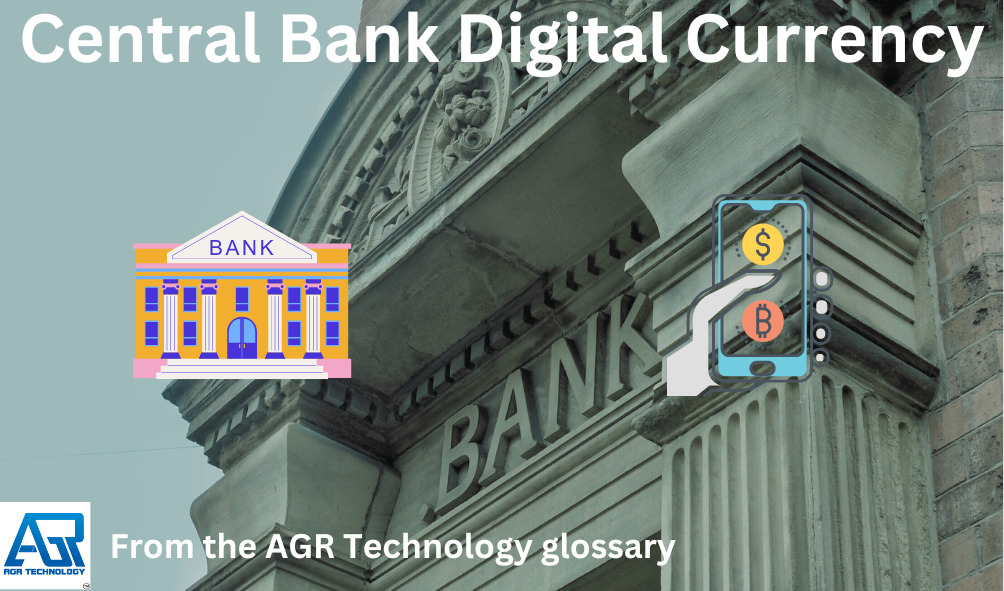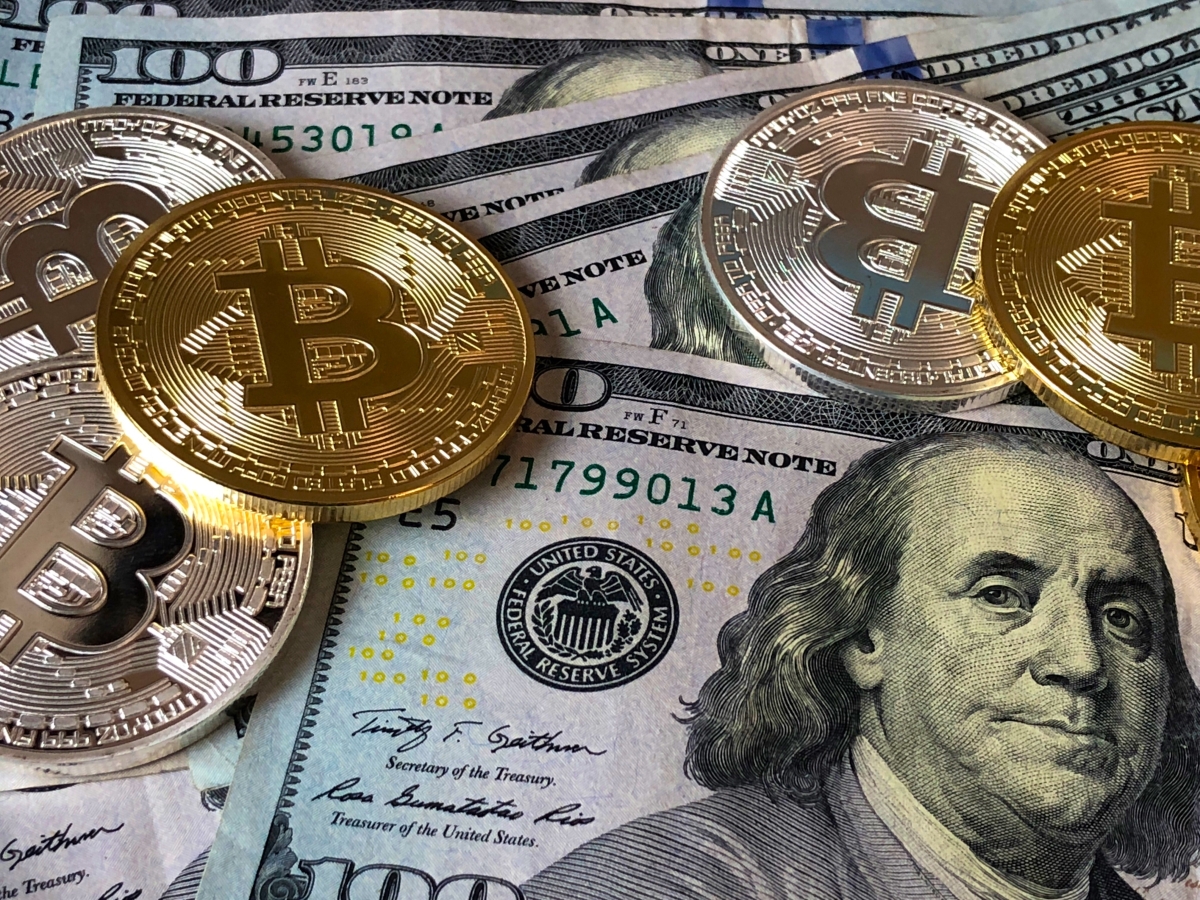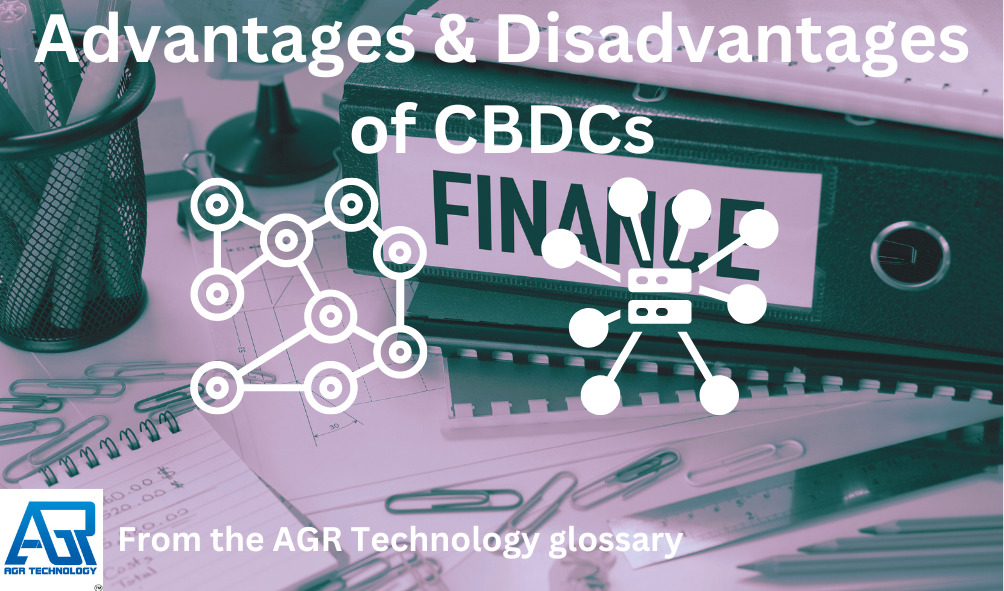Introduction

A central bank digital currency (CBDC) is one that is issued by a central bank rather than a commercial bank. As with real banknotes and coins, it is a liability of the central bank and denominated in the national currency. CBDCs are distinct from virtual money and cryptocurrencies in that they are or would be issued by a government.
In short, a CBDC could be seen as the opposite of something like a DeFi project which aims to create a decentralized financial environment whilst CBDC technology is centrally controlled.
The Central Bank of The Bahamas (Sand Dollar), the Eastern Caribbean Central Bank (DCash), the Central Bank of Nigeria (e-Naira), the Bank of Jamaica (JamDex), and the Reserve Bank of India (Digital Rupee) have all launched CBDCs as of January 2023. Some states have also issued or contemplated issuing cryptocurrency.
CBDC, like paper banknotes, is a high-security digital instrument that serves as a mode of payment, a unit of account, and a store of value. It has repercussions for commercial banks, such as decreased commissions, less ability to sell client data, and greater funding costs.
Digital fiat currency is a component of the base money supply, and it can be stored, exchanged, and transmitted by a variety of digital payment systems and services. CBDC implementation proposals frequently include the creation of universal bank accounts at central banks for all citizens.
Other content you may like on our blog:
Some of the best Crypto exchanges for Australians
List of top-rated NZ Crypto exchange platforms
High-quality Crypto exchange apps and platforms for people in Norway
Top picks for Crypto trading apps for Hong Kong users
Top picks of Crypto trading apps for Dubai & the United Arab Emirates
Top picks of Cryptocurrency trading applications for Taiwan users
Some of the best CFD trading platforms/brokers for Dubai users
Some of the best platforms to buy Crypto from Singapore
Background history & comparison with Cryptocurrencies

Cryptocurrencies are frequently discussed in order to increase a state’s independence from global financial institutions. The UK Treasury and the Bank of England declared in February 2023 that a state-backed digital pound will most likely be introduced after 2025.
Two weeks later, a Swiss lobby organization called for a national referendum on keeping a “sufficient quantity” of cash in circulation, citing concerns that electronic payments made it easier for the government to monitor its citizens’ activities.
According to BBC’s Faisal Islam, the issue is access to the data associated with every spending activity, and if people will choose to trust a multinational corporation over the state. The focus is on preserving UK monetary sovereignty in the face of upheaval from the likes of Big Tech.
Previously, central banks implemented e-money, such as Finland’s Avant stored value e-money card in the 1990s. The I LIKE Q initiative, which enabled the deployment of micropayments on the Internet, was introduced in Czechia in 2000.
The same group unveiled Project Currency in 2021, a sort of digital currency enhanced with smart contracts. In the field of economics, the current notion of “central bank digital currency” is known, in which the central bank allows citizens to have accounts with it, offering a dependable and safe public savings or payment medium.
In December 2020, the Bank for International Settlements (BIS) produced a report outlining the known CBDC wholesale and retail projects at the time.
It was expected that by April 2021, at least 80 central banks throughout the world will be investigating digital currencies. A central bank digital currency would most likely be implemented through the use of a database maintained by the central bank, government, or approved private-sector firms, which would keep track of the amount of money possessed by each entity.
Unlike cryptocurrencies, a central bank’s digital money is regulated and controlled centrally (even if it was stored on a distributed database).
Cryptocurrencies are typically based on an open Blockchain and decentralized whilst a CBDC is closed and may use Blockchain technology but isn’t open-source or distributed.
In Australia

The Australian Reserve Bank (RBA) which manages the central banking activities of Australia has announced over the years research projects into this technology with 2 notable projects named Project Atom & Project Dunbar respectively.
Here are summaries of both projects according to the RBA site:
The Reserve Bank, Commonwealth Bank of Australia, National Australia Bank, Perpetual, and ConsenSys collaborated on this project in 2020-2021, with additional input from King & Wood Mallesons. The project entailed creating a proof of concept for the issue of a tokenized form of CBDC that wholesale market participants could use to fund, settle, and repay a tokenised syndicated loan on an Ethereum-based DLT platform. (Project Atom)
A collaborative project between the BIS Innovation Hub, the Reserve Bank of Australia, Bank Negara Malaysia, the Monetary Authority of Singapore, and the South African Reserve Bank that will run from 2021 to 2022. The study investigated whether issuing several wholesale CBDCs on a common DLT platform may increase the efficiency, speed, and transparency of cross-border payments. (Project Dunbar)
Official report links:
In China (Digital RMB)

According to this CNN news article the Chinese Government has been working over the years to develop a digital version of its official Yuan/RMB currency.
Although China is on the approach to becoming a cashless society, the majority of electronic transactions are conducted through privately held applications such as AliPay and WeChat. Since 2020, China has been testing digital yuan in Chinese cities in preparation for a countrywide rollout that might put China ahead of Europe and the United States in the global race to build a state-backed digital currency.
The People’s Bank of China has issued the digital RMB, the world’s first major economy-issued digital currency. It is a legal currency and has the same value as other yuan denominations such as banknotes and coins. It is intended to be cheaper and faster than traditional financial transactions in both domestic and international transactions. Transactions between two offline devices are possible.
In Nigeria

The Central Bank of Nigeria issues and regulates the eNaira digital money. The eNaira, which is denominated in Naira, acts as both a medium of exchange and a store of value, and it claims to offer better payment prospects in retail transactions than cash.
President Muhammad Buhari launched and activated the eNaira on October 25, 2021, under the slogan “Same Naira, More Possibilities.”
Since October 28, 2021, the eNaira Speed Wallet application has been available for download on the Google Play Store and the App Store.
Advantages & Disadvantages of CBDCs

Since their inception, there has been many criticisms and discussion around the concept with many talking about both advantages and disadvantages of the technology and its use.
Without further ado here are some of the advantages and disadvantages of CBDCs:
Advantages
Faster transaction and processing
Transactions can be processed rapidly and cheaply, eliminating the need for intermediaries such as banks or payment processors.
Financial inclusion
CBDC can assist in bringing unbanked and underbanked populations into the formal financial system.
Potential for improvements in monetary policy
CBDC can provide central banks with more insight into the flow of money and assist them in implementing more effective monetary policy. The other side of this is potential privacy risks and too much control of financial information by a singular authority.
Reduced expenses
CBDC has the ability to lower the costs of creating, distributing, and handling cash.
Disadvantages
User privacy concerns
CBDC transactions can be recorded and monitored, possibly breaching the privacy of consumers.
Cybersecurity risks
CBDC systems may be exposed to hacking and cyber attacks, resulting in potential cash loss and financial system harm.
Financial stability and disruption to traditional systems
CBDCs have the potential to disrupt the traditional banking system, perhaps leading to financial instability if not properly handled.
Costs of implementation
Developing and implementing a CBDC system can be costly and time-consuming. CBDC may face opposition from users who prefer traditional currency or digital currencies such as Bitcoin.
Conclusion
We hope you found this informational page useful; if so, please share it with anybody you think will benefit from it, and stay tuned for additional updates.
Do you require assistance with technical solutions for your business? Check out our business services and the platforms we work with.
Check out our blog for more information, videos, and free software tools.
Related content/resources from our website:
DAO (Decentralized Autonomous Organization)
Summary of different companies, people and technologies in Crypto
Some of the best small business loans in Australia
FinTech (Financial technology)
What is Distributed Ledger Technology?
How to buy Bitcoin in Australia (beginners guide)
What are some of the best Cryptocurrencies to buy based on up-to-date prices?
What is a Neobank and how does it work?
Blockchain Explorer Definition
Cryptocurrency Market Analysis Definition
What are Initial Exchange Offerings (IEOs)
How can you accept Cryptocurrency payments on your eCommerce website?
Some of the best CFD trading platforms/brokers for Dubai users
Net worth calculator – online tool
Mortgage affordability calculator – online tool
Curated summary of the best CFD brokers/apps in Australia
Leading Cryptocurrency exchanges for Indian users
Top-rated Crypto exchanges for South Africa
Some of the best Cryptocurrency exchanges & apps for Saudi Arabia
Some of the best small business loan providers for Perth
Top CMC Markets Alternatives in Australia
Coinspot alternatives for Australian Crypto traders
Crypto wallet recovery services by AGR Technology
Web3 Marketing Services & Solutions For Brands
Curated summary of some of the best loan providers for Melbourne businesses
List of some of the best day trading applications for Australians
Top Forex trading platforms & brokers for Canadians
Top Etoro alternatives for Australian forex traders
What to look for when choosing a neobank app
Some of the best forex trading apps for New Zealand
Top Sydney business loan financing platforms
Top Alternatives to Swyftx for Australian Crypto users
Top-rated Alternatives to Etoro for Australian CFD traders
Some of the best Cryptocurrency exchanges/apps for Canadians
Citation(s):
Janda, Michael. “Reserve Bank to trial digital currency in ‘limited-scale pilot’ scheme” ABC News, 8 Aug. 2022, www.abc.net.au/news/2022-08-09/reserve-bank-of-australia-to-trial-digital-currency/101313556. Accessed 25 Apr. 2023.
Lowe, Philip. “Central Bank Digital Currency” 18 Nov. 2021, www.rba.gov.au/payments-and-infrastructure/central-bank-digital-currency/. Accessed 25 Apr. 2023.
Central bank digital currency, Wikipedia (June 30, 2017), https://en.wikipedia.org/wiki/Central_bank_digital_currency.
L. He, (2023). China makes a major push in its ambitious digital yuan project [Online]. CNN Business. Available at: https://edition.cnn.com/2023/04/24/economy/china-digital-yuan-government-salary-intl-hnk/index.html (Accessed: 25 April 2023).
“所有公务员,数字人民币发工资!这里宣布了-中国长安网” www.chinapeace.gov.cn/chinapeace/c100007/2023-04/22/content_12651428.shtml. Accessed 25 Apr. 2023.
eNaira. Wikipedia. https://en.wikipedia.org/wiki/ENaira. Published October 25, 2021. Accessed April 25, 2023.
Team, Editorial. “Say Hello To JAM-DEX » Bank of Jamaica” 17 Feb. 2022, boj.org.jm/say-hello-to-jam-dex/. Accessed 25 Apr. 2023.
Digital renminbi, Wikipedia (Apr. 6, 2021), https://en.wikipedia.org/wiki/Digital_renminbi.
![logo-new-23[1] logo-new-23[1]](https://agrtech.com.au/wp-content/uploads/elementor/thumbs/logo-new-231-qad2sqbr9f0wlvza81xod18hkirbk9apc0elfhpco4.png)